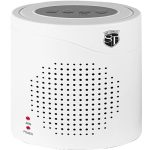What are the pros and cons of using home alarms? Well, home alarms offer strong deterrence against burglaries. With 60% of burglars bypassing alarmed homes. However, they can also lead to false alarms, which might result in fines. While systems like these can be pricey, costing between $300 to $1,200 initially, they often come with potential insurance discounts. Thus evening out future monitoring costs. Importantly, the peace of mind and improved response times due to alerts sent directly to your smartphone make the investment worthwhile. By understanding these options, you fully access their benefits.
Key Takeaways
- Home alarms deter burglaries, with 60% of burglars avoiding homes with visible systems.
- False alarms can lead to fines and reduced police responsiveness.
- Initial costs range from $300 to $1,200, but potential insurance discounts can mitigate expenses.
- Remote monitoring via smartphones allows for instant property status updates and control over home devices.
- DIY systems save on installation costs but lack the robustness and support of professionally monitored solutions.
Understanding Home Alarm System Types and Features

Understanding the different types of home alarm systems and their features is vital for ensuring your safety and peace of mind. Home alarm systems encompass a variety of devices, each designed to meet specific security needs.
Security cameras keep an eye on your property, offering both live monitoring and recorded footage. Door and window sensors alert you to unauthorized entries, though you’ll need to be cautious of false alarms, especially in busy areas.
Carbon monoxide alarms are lifesavers, warning you of CO buildup before it becomes lethal. Similarly, smoke detectors are important for early fire detection, greatly improving your home’s safety.
Each component plays a pivotal role, and understanding their functions helps you tailor your security setup effectively.
Pictured above is the Safety Technology Barking Dog Alarm currently on sale at Nittany Self Defense.
And be sure to watch this interesting video about barking dog security alarms
Evaluating the Effectiveness of Home Alarms in Preventing Burglaries
You might wonder just how effective your home alarm really is at keeping burglars at bay.
While these systems don’t offer foolproof protection, statistics show they do make a significant dent in potential break-ins, with most burglars steering clear of homes that flaunt alarm signs.
Let’s explore the strengths and limitations of these alarms and what the numbers really say about their impact on neighborhood safety.
Burglary Deterrence Capabilities
While evaluating the effectiveness of home alarms in preventing burglaries, it’s clear that these systems serve as a strong deterrent.
You’ll find that security measures, particularly burglary alarms, greatly deter burglars. About 80% of burglars check for alarms before attempting a break-in, and a visible home security system can make your entire neighborhood less appealing to potential intruders.
This not only protects your home but also enhances residential security in your area. Additionally, the presence of professional monitoring can decrease the likelihood of a successful break-in even further.
Although no system can guarantee 100% security, incorporating these measures makes a considerable difference. Remember, a robust alarm system can shift a burglar’s target away from your home.
Alarm System Limitations
Although home alarms are a formidable deterrent against burglaries, they aren’t foolproof. Your home security system can give you peace of mind, but it’s important to recognize its limitations. False alarms, for instance, can undermine trust in alarm systems, leading to potential fines and decreased police responsiveness over time.
| Aspect | Benefit | Limitation |
|---|---|---|
| Visibility | Deters potential burglars | May not stop determined intruders |
| False Alarms | Alerts you to possible breaches | Can lead to fines and complacency |
| Battery Backup | Functions during power outages | Requires regular maintenance |
| Professional Cameras | Enhances monitoring capabilities | Adds to overall cost |
| Comprehensive Coverage | Offers broad security | May not cover all vulnerabilities |
Statistical Impact Analysis
Understanding the real-world effectiveness of home alarms in deterring burglaries is essential as you consider enhancing your home security. Statistics reveal that homes equipped with alarm systems are less appealing to burglars, with 60% of them choosing other targets. This fact alone highlights the deterrent power of a robust home alarm system.
In 2022, with over 885,000 burglaries in the U.S., the role of these systems in preventing crime becomes even clearer. Additionally, the mere presence of security signage can fend off up to 80% of potential intruders.
Homes with alarms also report considerably lower losses if a burglary occurs—showing that not only can these systems deter burglars but also mitigate the impact should a break-in happen.
Home Alarm Systems: Weighing Cost Against Security Benefits
If you’re considering a home alarm system, you might wonder whether the investment is worth it. The initial system cost ranges from $300 to $1,200, but consider this: average losses in a burglary exceed $2,000.
Home security systems don’t just potentially save you money in losses; they can also provide insurance discounts, offsetting the monthly monitoring costs of $20 to $60.
Furthermore, alarm systems deter burglars effectively—about 60% of burglars skip homes once they spot an alarm.
While DIY systems might save upfront, they lack the full monitoring and swift emergency response of professionally installed systems, which enhance the effectiveness and reliability of your home security, safeguarding your peace of mind.
DIY vs. Professional Installation: What You Need to Know
After weighing the costs against the security benefits of home alarm systems, you might now be wondering about the best way to install your chosen system.
DIY installations might save you some cash upfront, with starter packages ranging from $200 to $350. However, these setups can be prone to errors that lead to false alarms and potential security gaps.
On the other hand, professional installation, though costing $600 to $2,000, guarantees your system’s ideal setup and functionality. Home security companies use their expertise to minimize risks and integrate with monitoring centers for 24/7 protection.
Professional installation ensures optimal setup and functionality, with seamless integration for round-the-clock security.
Plus, they provide robust customer support, which can be essential for troubleshooting and system maintenance, making professional installation a more reliable choice.
Common Challenges and Pitfalls With Home Alarms
While home alarms are a popular choice for enhancing security, they come with their own set of challenges that you should be aware of.
False alarms, often triggered by improper installation, are a significant issue. Keep in mind, about 90% of alarm activations are false, which can lead to fines and strain police resources.
If you’re leaning towards DIY security, remember that user errors during setup can leave your home vulnerable. Even the best wireless systems may face interference issues, undermining their effectiveness.
It’s important to regularly update and maintain whatever security system is right for you to guarantee its reliability.
Also, don’t let a high-tech system lull you into complacency; other safety measures are still essential.
How Home Alarms Integrate With Smart Home Technology
As you explore the integration of smart home technology with home alarms, you’ll find that seamless automation integration isn’t just convenient; it’s a game changer.
You can now monitor your home security remotely, ensuring you’re always in the loop, no matter where you are.
Enhanced security features like automated lighting during alarms act as a strong deterrent to intruders, making your home safer.
Seamless Automation Integration
When you integrate your home alarm with smart home technology, you gain centralized control over various devices—from lights and locks to thermostats—all through a single app or system.
This seamless integration not only automates your home for enhanced security and convenience but also lets you receive real-time alerts directly on your smartphone. You’ll know instantly if there’s an issue, reducing the risk of false alarms and improving response times.
Plus, with wireless integration and remote access, you can manage your smart home security from anywhere. Imagine adjusting settings or checking cameras with just your voice through smart speakers.
It’s not just security; it’s smart, adaptive living tailored to your lifestyle.
Remote Monitoring Capabilities
If you’ve ever worried about your home while away, modern home alarm systems with remote monitoring capabilities offer a reliable solution. These advanced systems provide real-time awareness of your property’s security status directly on your smartphone. Integration with smart home technology allows you to control lights, locks, and even your thermostat, making everything more convenient and secure.
| Feature | Benefit | Example |
|---|---|---|
| Real-time alerts | Immediate notification of security incidents | Smartphone notifications |
| Smart integration | Control other home devices | Adjust thermostats remotely |
| AI enhancements | Reduces false alarms, improves response | Video doorbell analysis |
| Wireless security | Operates even during outages | Cellular backups |
Embrace the peace of mind that comes with these wireless home security innovations.
Enhanced Security Features
While you manage your daily tasks, your home’s security can be enhanced considerably through the integration of smart home technology with modern alarm systems.
This smart home integration allows you to monitor your property with live video surveillance, ensuring you’re aware of any suspicious activity as it occurs. With real-time alerts pushed to your smartphone, you won’t miss a thing, even when you’re away.
Furthermore, these enhanced security features extend beyond mere observation; they include automating lights, locks, and even your thermostat, contributing to significant energy savings.
Such integrations not only bolster your home security but also enhance your home’s efficiency, making everyday living safer and more cost-effective.
Making an Informed Decision: Choosing the Right Home Alarm System
As you navigate the complexities of selecting a home alarm system, it’s vital to strike a balance between cost and functionality.
Home security systems range in price, with professionally installed options costing considerably more but offering extensive protection and 24/7 monitoring.
Consider a DIY system to save on installation but weigh it against the lack of professional support. Features like motion detectors can enhance security and help protect your home from intruders.
Don’t forget, insurance companies often provide discounts for homes with security systems, which can offset some costs.
Evaluate your home’s specific needs, considering potential false alarms and the unique risks your residence might face.
Make an informed choice that meets both your security needs and budget.
Frequently Asked Questions
What Are the Disadvantages of an Alarm?
You’ll face installation costs, monitoring fees, and maintenance requirements with an alarm. False alarms impact can lead to fines, user errors may reduce effectiveness, and concerns about system reliability and privacy persist.
Is It Worth Having a Home Alarm?
Yes, it’s worth having a home alarm considering the cost analysis, user reviews, and insurance benefits. The installation process, monitoring options, and technology advancements outweigh concerns about false alarms.
Do House Alarms Scare off Burglars?
Yes, house alarms do scare off burglars. They’re a strong visual deterrent that affects burglars’ behavior, enhancing neighborhood safety. Their effectiveness is backed by crime statistics, making them an essential part of home security.
What Are the Disadvantages of a Wireless Alarm System?
You’ll find wireless alarm systems can face issues like false alarms due to signal interference, limited range, and maintenance needs. They also have varied battery life, higher installation costs, and potentially weaker security features.
Conclusion
As you stand at the crossroads of securing your home, remember that choosing the right alarm system isn’t just ticking boxes; it’s about weaving a safety net that fits snugly around your daily life. Weigh the costs, understand the features, and consider how tech-savvy you want your sanctuary to be. Whether you go DIY or professional, make sure it’s a glove that fits well. Your peace of mind is worth that informed choice—don’t settle for less.



